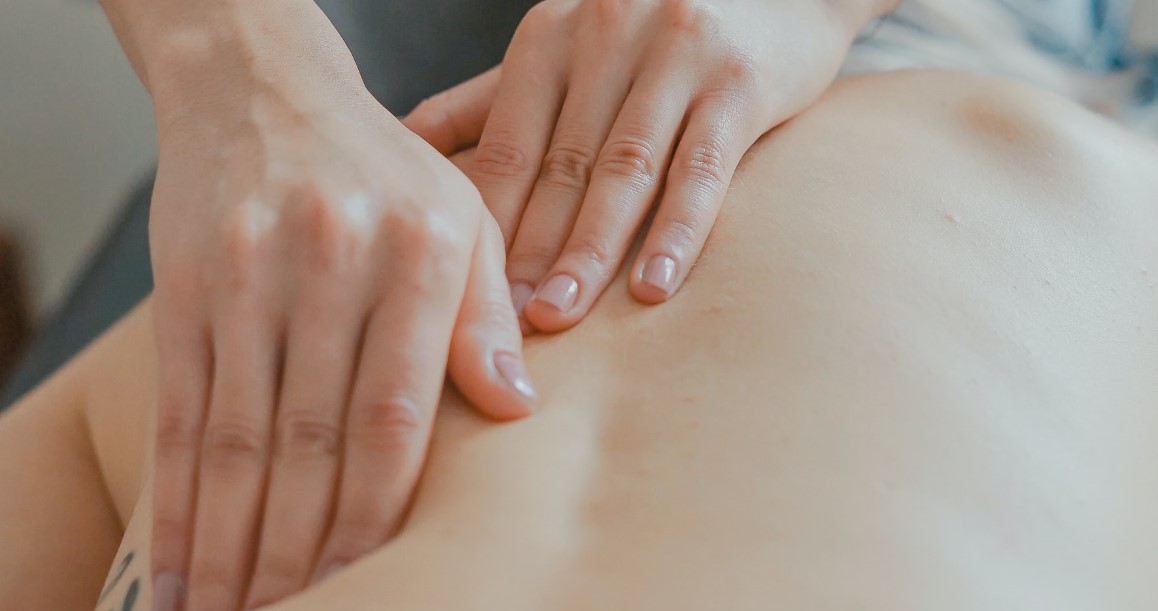How Should You Sleep with a Herniated Disc?

Bad sleeping positions can worsen pain caused by a herniated disc and prolong the time it takes to heal. The condition refers to a problem with a rubbery cushion between the spinal bones. It happens when the soft center of a spinal disc pushes through a crack in the exterior casing. While it may be caused by a number of things like the lifting of heavy loads or constant sitting or squatting, it normally goes away after a few weeks of self-care, including sleeping in positions that adequately support the spine.
How Do You Fix Herniated Discs?
In most cases, a herniated disc doesn’t necessitate surgery to correct the condition. There are several treatment options to fix herniated discs, including:
- Physical therapy
- Alternative medicine like acupuncture
- Seeing a chiropractor
- Over-the-counter medication
- Corrective surgery
What is the Best Position to Sleep with a Herniated Disc?
The best sleeping position for a herniated disk depends on the type of condition you are suffering from. There is no single sleeping position that works for everyone. Either way, the position should allow the spine to keep its curvature. While stomach-sleeping isn’t ideal for spine health, it can offer pain relief for paracentral herniation. If you have a foraminal herniation, sleeping on the side in a fetal position may be the way to go.
Once you decide what sleeping position is best for you, getting the right mattress, pillows and bed can make your sleep even more comfortable.
Is Sleeping on the Floor Good for Herniated Disc?
While there’s little scientific proof to support it, some people have found relief by sleeping on the floor. Sleeping on a firm surface allows the spine to maintain a position that is as neutral as possible. A good mattress can conform to your body in a similar effect, but sometimes you still end up sinking and stress out your joints.
What Should You Not Do with a Herniated Disc?
There are a number of things to avoid for the herniated disc to start feeling better:
-
Sitting too much
Sitting, especially when slouching forward in a set, puts more stress on your spinal discs. To reduce pain from a herniated disc in the lumbar spine, try standing up, moving around, or lying down when possible. But since sitting is sometimes unavoidable, you should try sitting up with your shoulders rolled back towards the chair or use a small pillow to support your lower back.
-
Strenuous exercise
While exercising is still recommended, avoid high-impact activities or movements that put too much pressure on your spinal discs. Avoid activities that tend to load your lower back repetitively like jumping rope or running. Also avoid yoga poses, sit-ups, and toe-touches than lead to significant bending of the back and worsen the pain.
-
Vacuuming
When vacuuming the floor, there is a repetitive forward-lunging motion which can irritate your herniated disc. Keep your back straight and walk the vacuum across the floor as opposed to extending your arm and bending your back. Alternatively, you could opt for a robot vacuum cleaner to do it for you.
-
Doing laundry
Doing the laundry involves carrying a heavy basket, bending down to pick clothes, and other activities that puts significant on your lower back. You need to avoid this, instead, have the laundry done by a family member or hire laundry services.
-
Feeding pets
Bending down to fill your pet’s bowl can irritate your herniated disc and cause a painful flare-up. It is also something you need to avoid, and instead, delegate the responsibility to someone else. If you must do it, then get one of those specialty pet bowls with an extended tube or reaching aid built-in.
What is the Best Treatment for a Herniated Disc?
There are several treatment options for a herniated disc. The main goal of treatment for each patient is to help relieve pain other herniated disc symptoms. To realize this goal, the treatment plan of each patient should be individualized as per the source of the pain, severity, and the specific symptoms each exhibit.
With that said, a combination of the following conservative approaches to herniated disk treatment can be used for the first six weeks of pain and discomfort:
- Ice and heat therapy to relieve pain
- Physical therapy, exercise and gentle stretching for nerve root pressure relief
- Chiropractic manipulation
- Pain relief through narcotic pain medications
- Non-steroidal anti-inflammatory drugs like ibuprofen or naproxen for pain relief
- Reducing inflammation for pain relief through epidural injections
If about six weeks of conservative treatment fails to relieve the pain, surgery may be considered.
Can a Herniated Disc Go Back into Place?
Normally a herniated disc will heal on its own after a few weeks. You need to be patient, and keep following your treatment plan. Also, don’t engage in activities that may jeopardize your getting better. If the symptoms don’t get any better in a few months, you may want to talk to your doctor about surgical treatment.
How Long Does a Herniated Disc Last?
In most cases, herniated disc pain gets better after some days and completely resolves in 4 to 6 weeks. Restricting your activity, sleeping in the right positions, ice/heat therapy, medications, and other treatments will help your recovery.
How Do You Fix a Herniated Disc at Home?
Gentle exercises, stretches, and activities can all help relieve the pain of a herniated disc. Besides, exercises can also improve flexibility and strengthen the neck, spine, and back. Start small and build up the level of activity slowly. Some of the gentle activities to help with a herniated disc include swimming, yoga, cycling, and walking.
Do You Ever Fully Recover from a Herniated Disc?
In most cases, pain associated with a herniated disc goes away on its own over a period of weeks or months and doesn’t cause permanent spine or nerve damage. The biggest factor in healing a herniated disc is time.


![Good Posture for Bassists [Best Posture for Playing Bass]](https://www.goodposturehq.com/wp-content/uploads/thumbs_dir/Good-Posture-for-Bassists-prlo9r28a7kjuccnls4l0ln7wus4y8khcjvamosmhg.jpeg)
![Good Posture When You Draw [How to Get the Best Position]](https://www.goodposturehq.com/wp-content/uploads/thumbs_dir/Good-Posture-When-You-Draw-prlnpziekmihpj280qk0337a867a3d3oaq0qc83nbo.jpeg)
![Driving Posture Support [How to Achieve a Good Driving Position]](https://www.goodposturehq.com/wp-content/uploads/thumbs_dir/Driving-Posture-Support-prlmshjh06nlxtpymr9nq1iw2tbcrp420x0rm7rr2s.jpeg)
![Safest Driving Position [And Comfy for Long Trips]](https://www.goodposturehq.com/wp-content/uploads/thumbs_dir/Safest-Driving-Position-prlllxejk8e89fjh5czrts5jsr32925ku9nbd6vgt0.jpeg)